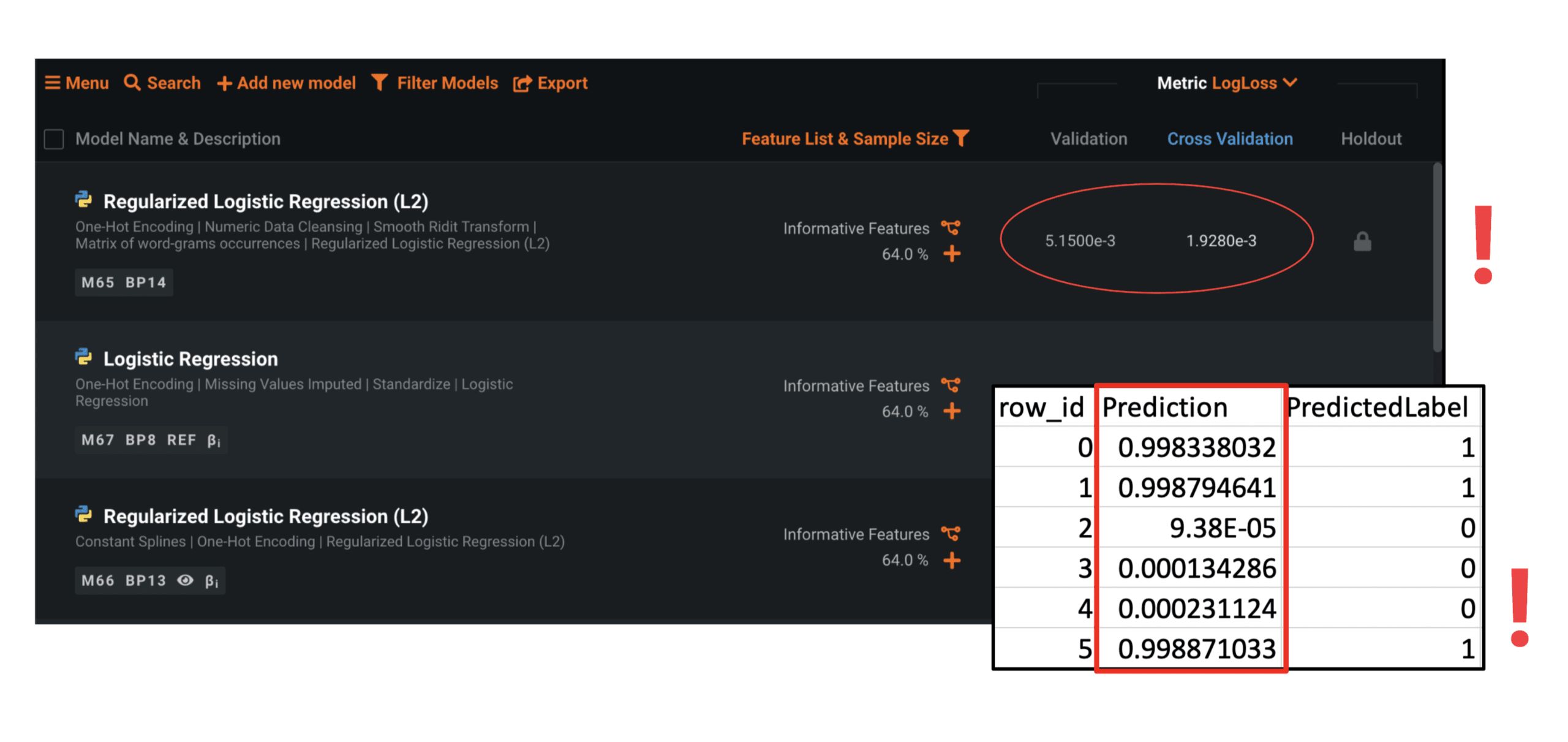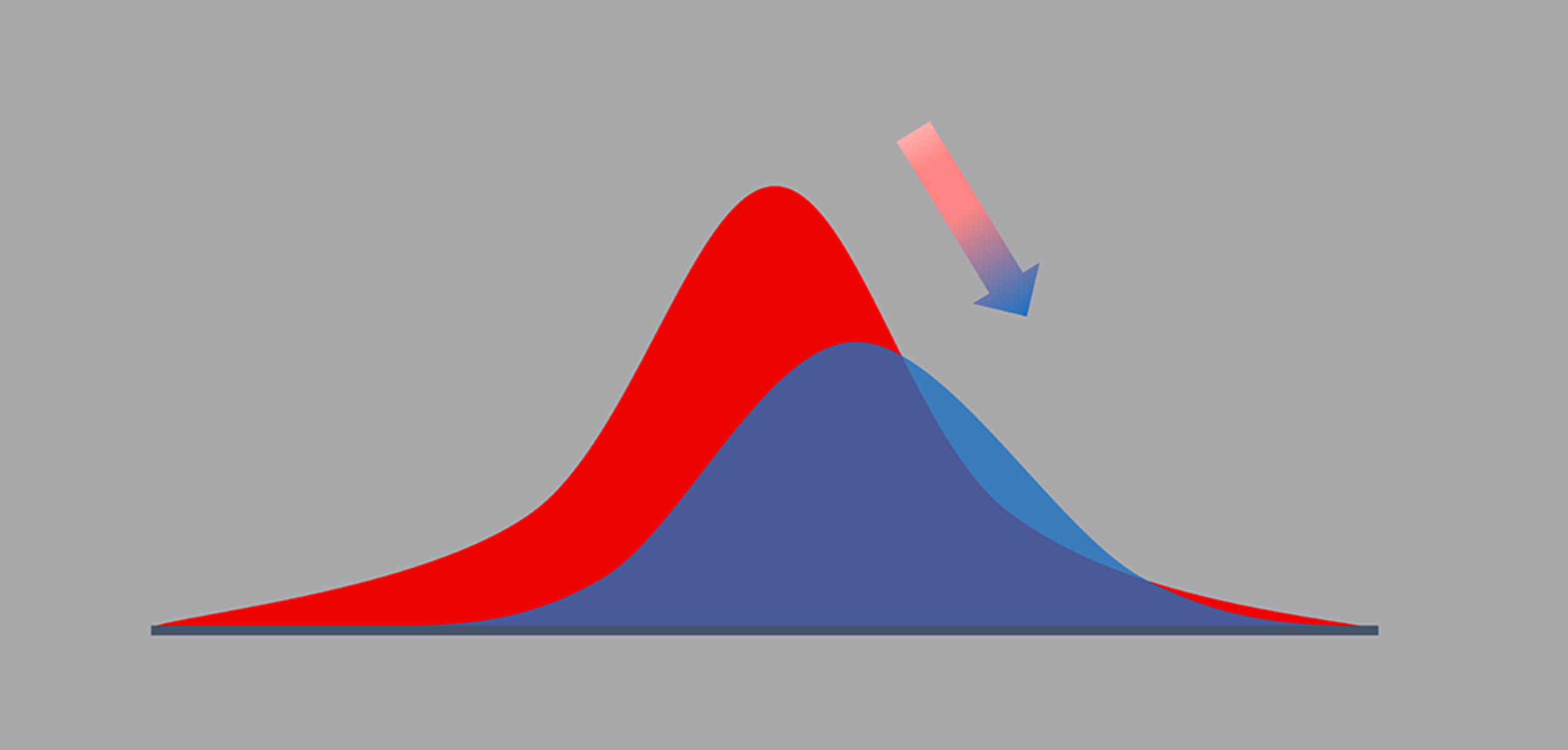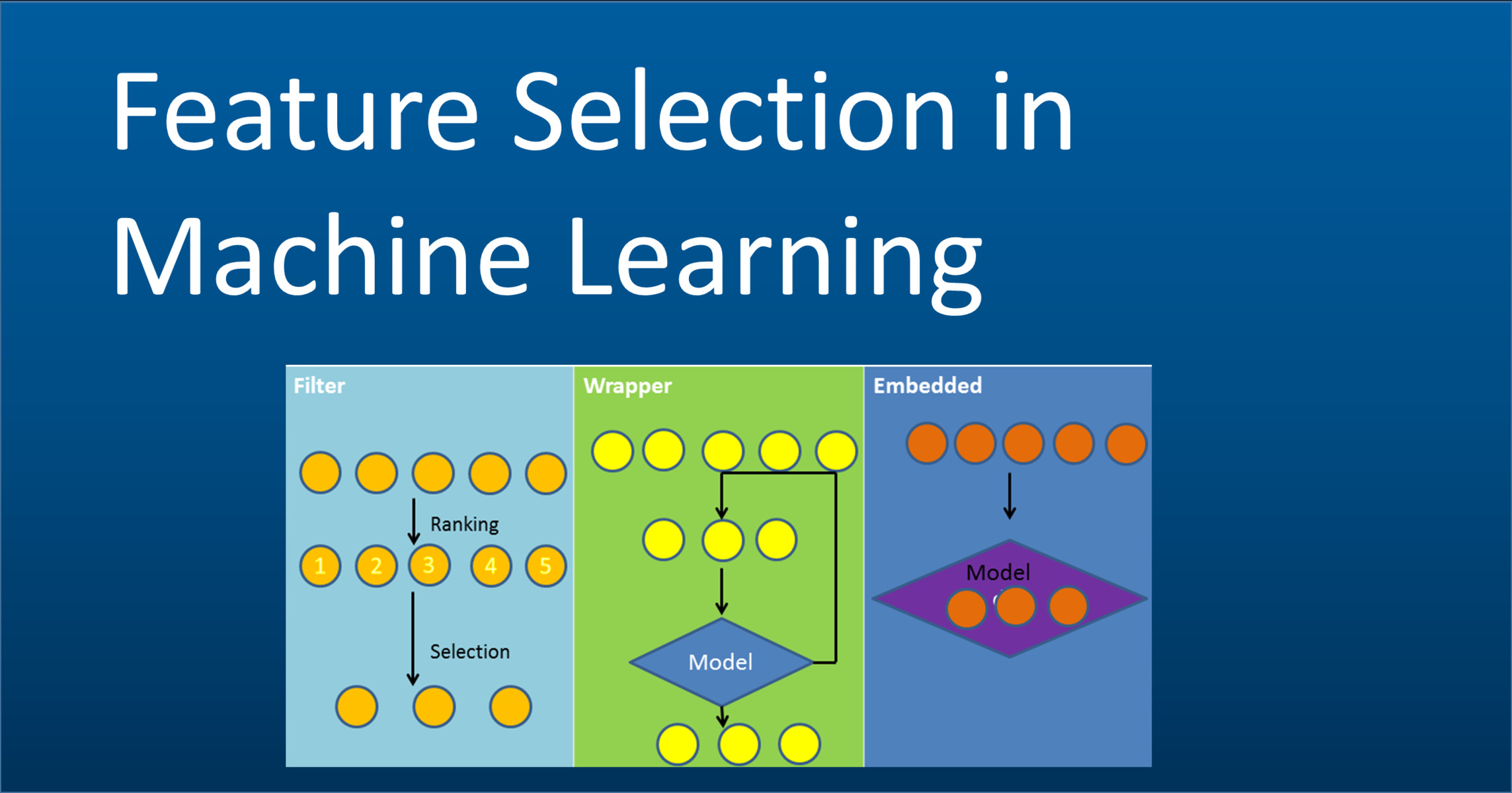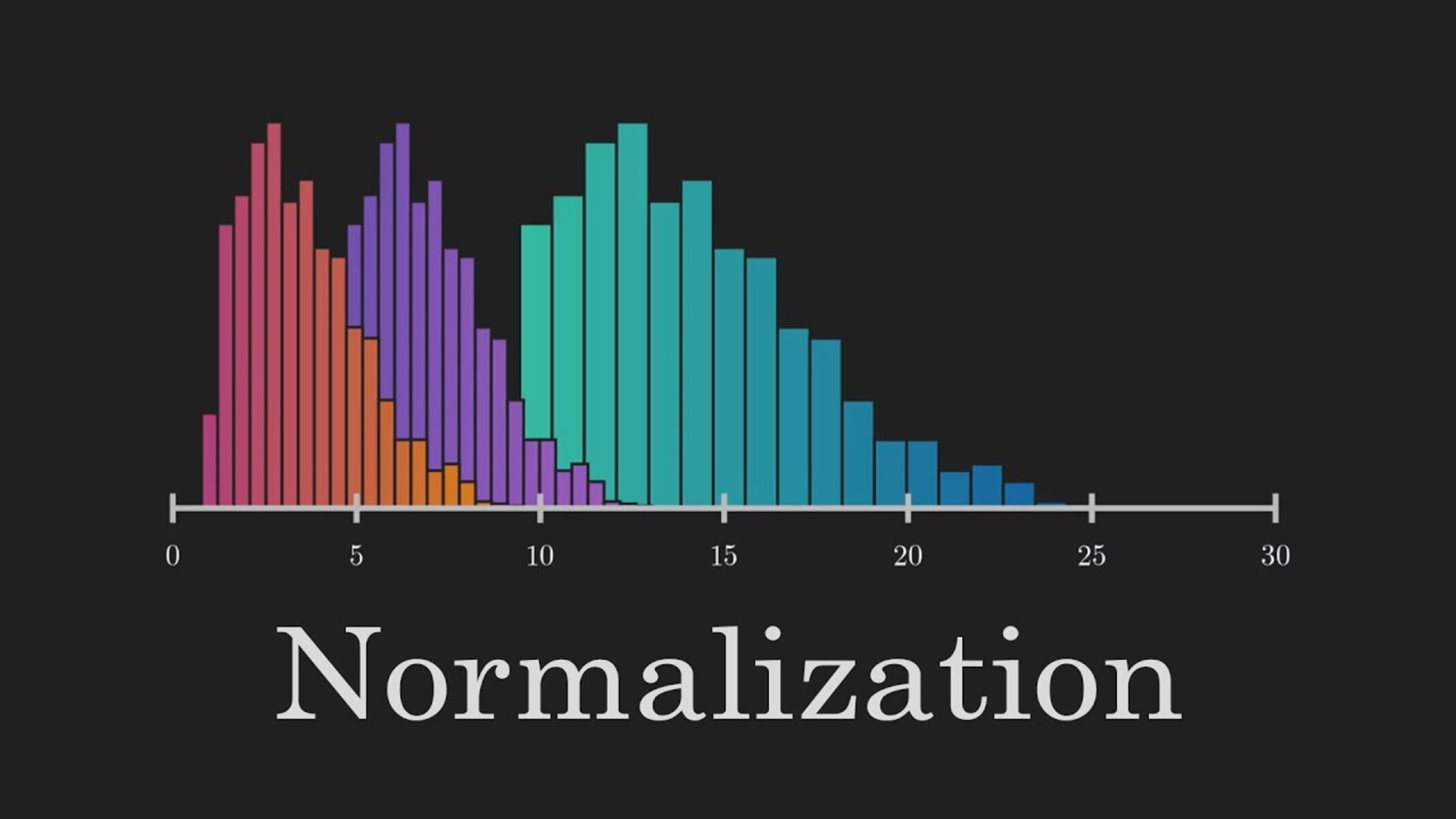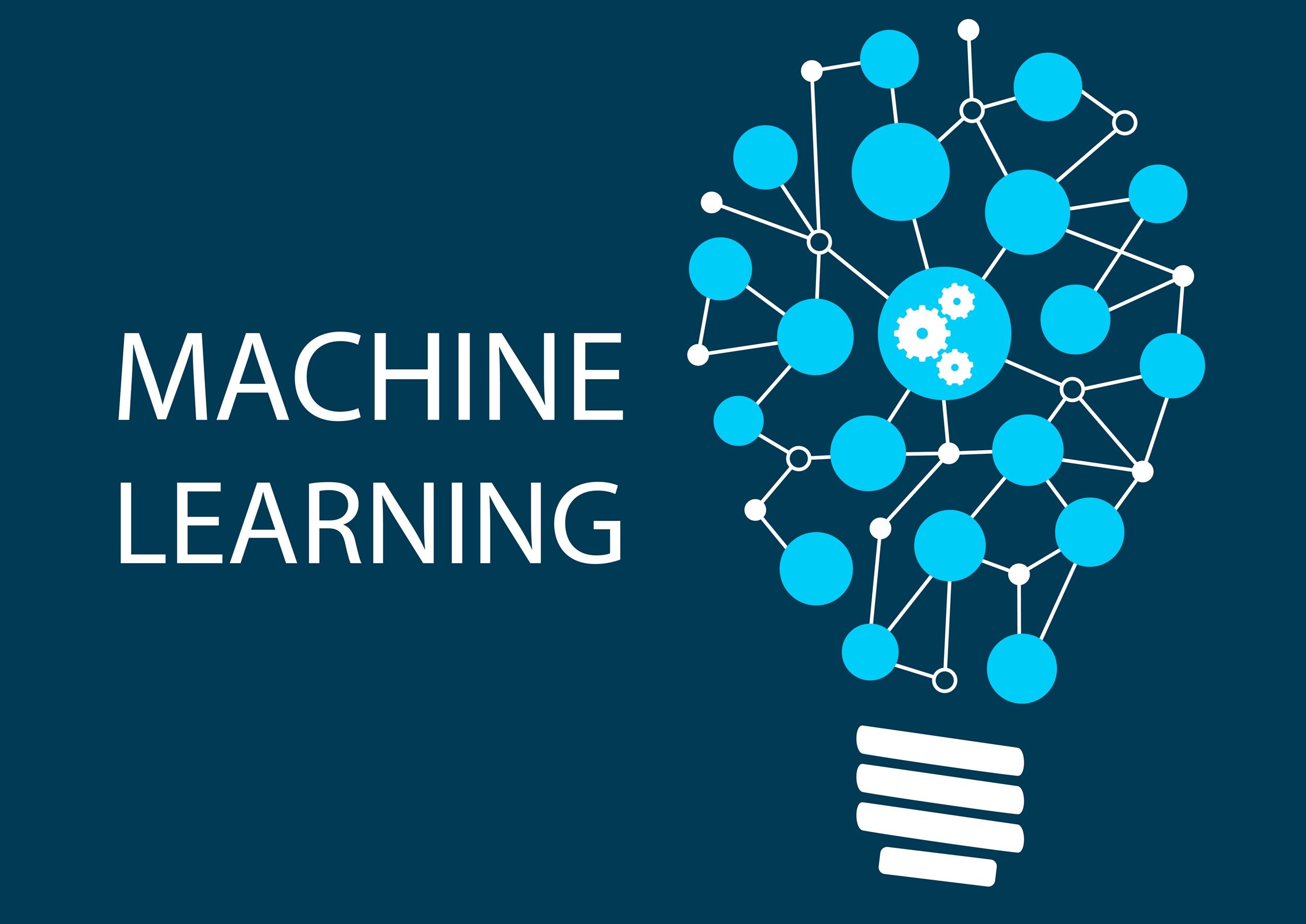What is a Target Variable in Machine Learning?
In the field of machine learning, a target variable is the variable that we are trying to predict or estimate based on the data available. It is also known as the dependent variable or the response variable. The target variable is the main focus of the machine learning model, as it represents the outcome or result that we are interested in understanding or predicting.
The target variable can take different forms depending on the nature of the problem we are trying to solve. In some cases, it can be a continuous variable, such as predicting the price of a house or the amount of rainfall in a region. In other cases, it can be categorical, such as classifying emails as spam or non-spam, or identifying the species of a plant based on its characteristics.
The target variable is crucial in machine learning because it provides the basis for training and evaluating the performance of the model. By measuring the model’s ability to accurately predict the target variable, we can assess its effectiveness and make informed decisions based on the predictions.
Understanding the nature of the target variable is essential in choosing the appropriate machine learning algorithm and selecting the right set of features to train the model. Different algorithms are suitable for different types of target variables, and selecting the wrong algorithm can lead to inaccurate predictions and poor model performance.
Furthermore, the target variable also determines the evaluation metric used to assess the model’s performance. For example, if the target variable is binary (e.g., classifying emails as spam or non-spam), we can use metrics like accuracy, precision, and recall. However, if the target variable is continuous (e.g., predicting house prices), metrics like mean absolute error (MAE) or root mean squared error (RMSE) are more appropriate.
To summarize, the target variable in machine learning is the variable that we are trying to predict or estimate based on the available data. It plays a crucial role in training the model, selecting the right algorithm, and evaluating the model’s performance. Understanding the nature of the target variable is essential for building accurate and reliable machine learning models.
Definition of Target Variable
The target variable, also known as the dependent variable or response variable, is a key concept in machine learning. It refers to the variable that we aim to predict or estimate based on the available data. The target variable represents the outcome or result that we are interested in understanding or predicting. It serves as the main focus of the machine learning model.
Often, the target variable is influenced by one or more independent variables, also known as features or predictors, which are used to make predictions or estimations. By analyzing the relationships between the target variable and the independent variables, the machine learning model aims to uncover patterns and make accurate predictions.
The target variable can take different forms depending on the problem at hand. It can be a continuous variable, such as predicting the price of a house, the temperature at a given time, or the stock market index. In these cases, the machine learning model estimates a numerical value as the outcome.
On the other hand, the target variable can be a categorical variable, where the model predicts the class or category to which new data points belong. Examples of this include classifying emails as spam or non-spam, identifying the species of a plant, or recognizing handwritten digits.
Another form of the target variable is the binary variable, where the prediction is based on two possible outcomes. This could include predicting whether a customer will churn or not, whether a credit card transaction is fraudulent or not, or whether a patient has a particular disease or not.
In some cases, the target variable can have multiple classes, referred to as a multi-class target variable. For instance, predicting the type of cuisine based on a recipe, identifying the genre of a piece of music, or classifying images into different categories.
The target variable is the core element of a machine learning problem. It guides the model’s learning process and evaluation, determining the success of the model’s predictions. Understanding the nature and characteristics of the target variable is crucial for selecting the appropriate machine learning algorithm and for assessing the model’s performance accurately.
To summarize, the target variable is the variable we aim to predict or estimate in machine learning. It could be continuous, categorical, binary, or multi-class, depending on the problem. The target variable guides the model’s learning process and evaluation, playing a crucial role in the success of the machine learning model.
Importance of Target Variables in Machine Learning
The target variable holds immense importance in the field of machine learning. It serves as the focal point of the learning process and plays a critical role in building accurate and effective models. Here are the key reasons why target variables are crucial in machine learning:
1. Guide for Model Learning: The target variable provides the guiding signal for the machine learning algorithm. By analyzing the relationships between the target variable and the independent variables, the model learns patterns, correlations, and dependencies that help it make accurate predictions or estimations.
2. Performance Evaluation: The target variable serves as the basis for evaluating the performance of the machine learning model. By comparing the predicted values to the actual values of the target variable, we can measure the model’s accuracy, precision, recall, and other metrics. This evaluation helps us determine the model’s effectiveness and make informed decisions based on its predictions.
3. Algorithm Selection: The nature of the target variable influences the choice of machine learning algorithms. Different algorithms are suited for different types of target variables. For instance, regression algorithms are appropriate for continuous target variables, while classification algorithms are used for categorical or binary target variables. Selecting the right algorithm based on the target variable is crucial for achieving accurate predictions and optimal model performance.
4. Feature Selection: The target variable helps in identifying relevant features in the dataset. By analyzing the relationship between the target variable and the independent variables, we can determine which features are most influential in predicting the target variable. This knowledge assists in feature selection, where we choose the most relevant features to include in the model, thus improving its performance and reducing computational complexity.
5. Decision-Making: The predictions made by the machine learning model based on the target variable assist in decision-making processes. For example, in healthcare, predicting the likelihood of a patient having a certain disease helps healthcare professionals decide on appropriate treatments or interventions. Similarly, in marketing, predicting customer churn helps businesses make strategic decisions to retain customers and improve customer satisfaction.
6. Business Impact: The target variable has a direct impact on the business value derived from machine learning models. Accurate predictions or estimations of the target variable can lead to improved efficiency, cost savings, increased revenue, or better decision-making. Understanding the importance of the target variable ensures that the focus of machine learning efforts aligns with the goals and objectives of the business.
In summary, the target variable is of utmost importance in machine learning. It guides the learning process, helps evaluate model performance, assists in algorithm and feature selection, supports decision-making, and has a direct impact on business outcomes. Understanding the significance and characteristics of the target variable is crucial for developing effective machine learning solutions.
Types of Target Variables
In machine learning, the target variable can take various forms depending on the nature of the problem we are trying to solve. Understanding the different types of target variables is vital in selecting the appropriate modeling techniques and evaluating the performance of the model. Here are the main types of target variables:
1. Continuous Target Variables: A continuous target variable is one that can take any value within a given range. Examples of continuous target variables include predicting the price of a house, estimating the temperature at a specific time, or forecasting the stock market index. Regression algorithms are commonly used to predict continuous target variables.
2. Categorical Target Variables: A categorical target variable consists of a set of distinct categories or classes. The goal here is to classify new data points into one of these categories based on the available features. Examples of categorical target variables include classifying emails as spam or non-spam, identifying the species of a plant, or recognizing different types of cancer. Classification algorithms, such as decision trees or logistic regression, are used for these types of target variables.
3. Binary Target Variables: A binary target variable is a special case of a categorical variable where there are only two possible outcomes. For example, predicting whether a customer will churn or not, whether a credit card transaction is fraudulent or not, or whether a patient has a particular disease or not. Binary classification algorithms, like logistic regression or support vector machines, are often used to predict binary target variables.
4. Multi-class Target Variables: A multi-class target variable involves more than two categories or classes. In this scenario, the goal is to classify data points into multiple distinct classes. Examples include predicting the type of cuisine based on a recipe, identifying the genre of a piece of music, or classifying images into different categories. Classification algorithms designed for multi-class problems, such as random forests or neural networks, are commonly applied.
Identifying the type of target variable is essential as it influences the choice of algorithms and evaluation metrics used for training and evaluating the machine learning model. Different algorithms are designed to handle specific types of target variables effectively. Additionally, the evaluation metrics, such as accuracy, precision, recall, or F1 score, depend on the nature of the target variable.
By understanding the type of target variable, machine learning practitioners can make informed decisions on data preprocessing, feature engineering, algorithm selection, and evaluation strategies to build accurate and reliable models that best fit the problem at hand.
To summarize, the main types of target variables in machine learning are continuous, categorical, binary, and multi-class. The type of target variable influences the choice of algorithms and evaluation metrics used in the modeling process. Understanding the different types of target variables is crucial for developing effective machine learning solutions and making informed decisions throughout the modeling pipeline.
Continuous Target Variables
In machine learning, a continuous target variable is a type of target variable that can take any value within a given range. It represents a numerical quantity that is not limited to specific discrete values or categories. Continuous target variables are commonly encountered in various real-world scenarios and can be predicted using regression algorithms.
Examples of continuous target variables include predicting the price of a house, estimating the temperature at a specific time, or forecasting the stock market index. In these cases, the machine learning model aims to estimate a numerical value that represents the desired outcome.
The prediction of continuous target variables involves finding relationships between the independent variables (also known as features or predictors) and the target variable. By analyzing these relationships, the model learns a mathematical function that can make accurate estimations or predictions.
Regression algorithms are typically used to predict continuous target variables. Linear regression is a common approach where the model assumes a linear relationship between the independent variables and the target variable. Other regression techniques, such as polynomial regression, decision tree regression, or support vector regression, can capture more complex relationships between the variables.
Evaluating the performance of a machine learning model predicting continuous target variables involves assessing how close the predicted values are to the actual values. Common evaluation metrics for regression problems include mean squared error (MSE), mean absolute error (MAE), and root mean squared error (RMSE). These metrics quantify the differences between the predicted and actual values, providing a measure of how well the model is performing.
Handling continuous target variables requires appropriate data preprocessing and feature engineering. Data normalization, scaling, or transformation may be necessary to ensure that the independent variables are in a suitable format for the regression algorithms. Feature engineering can involve creating new features, selecting relevant features, or transforming existing ones to capture the relationships with the target variable more effectively.
In summary, continuous target variables are numerical variables that can take any value within a range. These variables play a significant role in regression problems where the goal is to estimate or predict a numerical value based on the available data. Regression algorithms and appropriate evaluation metrics are used to handle continuous target variables and assess the performance of the machine learning models.
Categorical Target Variables
In machine learning, a categorical target variable is a type of target variable that consists of a set of distinct categories or classes. Rather than predicting a numerical value, the goal is to classify new data points into one of these categories based on the available features. Categorical target variables are commonly encountered in classification problems, and they require specific techniques to handle them effectively.
Examples of categorical target variables include classifying emails as spam or non-spam, identifying the species of a plant, or recognizing different types of cancer. Each data point is assigned to a specific category, and the machine learning model aims to accurately predict the category to which a new data point belongs.
Classification algorithms are used to predict categorical target variables. These algorithms learn patterns and decision boundaries within the data to assign the appropriate class to new instances. Decision trees, logistic regression, naive Bayes, and support vector machines are some of the commonly used algorithms in handling categorical target variables.
Evaluation of models predicting categorical target variables involves the comparison of predicted labels to the actual labels. Accuracy, precision, recall, and F1 score are some of the common evaluation metrics used in classification tasks. These metrics provide insights into the model’s ability to correctly classify data points into the respective categories.
Handling categorical target variables typically involves preprocessing steps such as one-hot encoding. One-hot encoding converts each category into a binary vector representation, where each category is represented by a separate binary variable indicating its presence or absence. This transformation enables the model to capture the categorical information and make predictions accordingly.
Feature selection and engineering are also crucial in predicting categorical target variables. Selecting relevant features that have a strong association with the target variable helps in improving the model’s performance. Feature engineering techniques, such as creating interaction terms or transforming variables, can further enhance the model’s ability to capture complex relationships between the features and the target variable.
It is important to note that when dealing with imbalanced classes in categorical target variables, techniques such as oversampling or undersampling, or the use of ensemble methods like random forests or gradient boosting, can help in addressing the class imbalance issue and improve the model’s performance.
In summary, categorical target variables consist of distinct categories, and the goal is to classify new data points into one of these categories. Classification algorithms, evaluation metrics, and preprocessing techniques specific to category prediction are used to handle categorical target variables effectively.
Binary Target Variables
In machine learning, a binary target variable is a special type of categorical variable that has only two possible outcomes or classes. The goal is to predict whether a data point belongs to one of the classes, often referred to as the positive class or the negative class. Binary target variables are commonly encountered in classification problems where there are two distinct categories to be predicted.
Examples of binary target variables include predicting whether a customer will churn or not, whether a credit card transaction is fraudulent or not, or whether a patient has a particular disease or not. The machine learning model aims to assign a binary label to each data point based on the available features, indicating the presence or absence of the target condition.
To predict binary target variables, various classification algorithms are used, including logistic regression, support vector machines, random forests, and neural networks. These algorithms learn patterns and decision boundaries to separate the positive and negative classes, enabling accurate classification of new instances.
Evaluation of models predicting binary target variables involves comparing the predicted labels with the actual labels. Common evaluation metrics for binary classification tasks include accuracy, precision, recall, and F1 score. These metrics provide insights into the model’s performance in correctly predicting the positive and negative classes and detecting instances of interest.
Data preprocessing and feature engineering play a crucial role in handling binary target variables. Preprocessing steps may include handling missing values, data normalization, or dealing with class imbalance if one class is significantly more prevalent than the other. Feature engineering techniques can involve creating new features, selecting relevant features, or transforming existing features to improve the model’s performance.
Handling class imbalance, where one class is underrepresented compared to the other, is a common challenge in binary classification tasks. Techniques such as oversampling the minority class, undersampling the majority class, or using more advanced methods like SMOTE (Synthetic Minority Over-sampling Technique) can be employed to address this issue and improve the model’s accuracy and performance.
Binary target variables are fundamental in many real-world applications as decisions or actions are often based on whether an instance belongs to one class or the other. Accurate predictions of binary target variables can lead to better decision-making, improved customer satisfaction, fraud detection, and more targeted interventions.
In summary, binary target variables consist of two distinct classes, and the goal is to correctly classify data points into one of these classes. Specific classification algorithms, evaluation metrics, and preprocessing techniques tailored for binary classification tasks are used to handle binary target variables effectively.
Multi-class Target Variables
In machine learning, a multi-class target variable refers to a variable that can have more than two distinct categories or classes. The goal is to predict the appropriate class label for a given data point based on the available features. Multi-class target variables are commonly encountered in classification tasks where there are multiple mutually exclusive classes to be predicted.
Examples of multi-class target variables include predicting the type of cuisine based on a recipe, identifying the genre of a piece of music, or classifying images into different categories. The machine learning model aims to assign a label to each data point, indicating the class or category to which it belongs.
To predict multi-class target variables, various classification algorithms can be used, such as decision trees, random forests, logistic regression, or neural networks. These algorithms learn patterns and decision boundaries in the data to accurately classify new instances into the respective classes.
Evaluating the performance of models predicting multi-class target variables involves comparing the predicted labels with the actual labels. Common evaluation metrics for multi-class classification tasks include accuracy, precision, recall, and F1 score. These metrics provide insights into the model’s ability to correctly classify instances into the correct classes and detect instances belonging to specific categories of interest.
Data preprocessing and feature engineering play a crucial role in handling multi-class target variables. Preprocessing steps may involve handling missing values, data normalization, or encoding categorical features. Feature engineering techniques can include creating new features, selecting relevant features, or transforming existing features to capture the relationships between the features and the multi-class target variable more effectively.
Choosing an appropriate machine learning algorithm depends on the characteristics of the multi-class problem and the available data. Some algorithms are specifically designed to handle multi-class classification tasks, such as softmax regression or multi-class support vector machines.
In cases where the classes in the multi-class target variable are imbalanced, meaning that some classes have significantly fewer instances than others, techniques like stratified sampling or class weighting can be employed to balance the representation of different classes and improve the model’s performance.
Multi-class target variables are essential in various real-world applications, enabling the identification and classification of data into multiple distinct categories. Accurate predictions of the multi-class target variable can inform decision-making, improve recommendation systems, enhance personalized services, or support the diagnosis of complex diseases.
In summary, multi-class target variables consist of more than two distinct classes, and the goal is to classify data points into one of these classes. Utilizing specific classification algorithms, evaluation metrics, and preprocessing techniques tailored for multi-class classification tasks is key to effectively handling multi-class target variables in machine learning.
How to Determine the Target Variable
Determining the target variable is a crucial step in machine learning as it defines the objective of the model and the nature of the prediction task. The target variable represents the outcome or result that we are interested in understanding or predicting. Here are some considerations and steps to determine the target variable:
1. Clearly Define the Problem: Start by clearly defining the problem you are trying to solve. Understand the specific question or task you want the machine learning model to address. Whether it is predicting a numerical value, classifying data into categories, or identifying patterns in the data, a clear problem definition is essential.
2. Understand the Business or Research Context: Gain a deep understanding of the business or research context in which the prediction task is applied. This understanding will help identify the relevant variables and the desired outcome. Consult with domain experts to ensure that the chosen target variable aligns with the goals and objectives of the project.
3. Analyze the Data: Thoroughly analyze the available data to identify potential variables that could serve as the target variable. Look for variables that are directly related to the problem at hand and have a meaningful impact on the desired outcome. Exploratory data analysis techniques, such as visualizations and statistical analyses, can help in this process.
4. Consider Data Availability and Quality: Take into account the availability and quality of data. Ensure that the chosen target variable has sufficient data points and is measured accurately. If the data for the target variable is limited or noisy, consider alternative representations or transformations of the variable that might be more suitable for the prediction task.
5. Align with Machine Learning Algorithms: Consider the capabilities and requirements of different machine learning algorithms when determining the target variable. Some algorithms are more suited for regression tasks, while others are designed for classification tasks. It is important to select a target variable that aligns with the appropriate algorithm and analysis techniques.
6. Validation and Iteration: Validate the chosen target variable by testing its suitability through iterative model development. Evaluate different target variables and measure their impact on the model’s performance. Iterate the process, adjusting the target variable if necessary, until the desired level of accuracy and effectiveness is achieved.
7. Documentation and Communication: Document the process of determining the target variable to maintain a clear record of decisions made. Communicate and discuss the chosen target variable with stakeholders, including the rationale behind the selection, to ensure alignment and understanding of the prediction task.
Determining the target variable is a critical step in machine learning that requires careful consideration. By clearly defining the problem, understanding the context, analyzing the data, considering algorithm capabilities, and following a validation and iteration process, a suitable target variable can be determined to guide the development of an effective machine learning model.
Examples of Target Variables
In machine learning, the choice of target variable depends on the specific problem being addressed. The target variable represents the outcome or result that we are interested in understanding or predicting. Here are some examples of different types of target variables across various domains:
1. Housing Price Prediction: In real estate, the target variable could be the price of a house. The machine learning model can analyze features such as location, size, number of rooms, and amenities to predict the sale price of a property.
2. Customer Churn Classification: In customer retention, the target variable may be whether a customer will churn or not. The model can leverage customer data, such as past purchase history, interactions, and demographics, to predict the likelihood of churn, helping businesses take proactive measures to retain valuable customers.
3. Disease Diagnosis: In healthcare, the target variable could be the presence or absence of a specific disease. By analyzing patient medical records, symptoms, and test results, a machine learning model can assist in diagnosing diseases or predicting the likelihood of developing certain medical conditions.
4. Sentiment Analysis: In natural language processing, the target variable can be the sentiment of a text or review. By analyzing the textual content, the model can determine whether the sentiment is positive, negative, or neutral, which is valuable for sentiment analysis, customer feedback analysis, and brand monitoring.
5. Image Classification: In computer vision, the target variable could be identifying objects or scenes in images. For example, a model can be trained to classify images into categories such as cats, dogs, or cars. This is important for applications like autonomous vehicles, image recognition, and visual search.
6. Credit Card Fraud Detection: In financial transactions, the target variable may indicate whether a credit card transaction is fraudulent or genuine. By analyzing transaction details, user behavior, and historical data, a model can identify suspicious patterns and flag potentially fraudulent transactions.
7. Species Identification: In biology and ecology, the target variable could be identifying the species of plants or animals based on their characteristics. By examining features like physical measurements, habitat, and behavior, machine learning models can contribute to species identification, conservation efforts, and ecological research.
8. Stock Market Prediction: In finance, the target variable may involve predicting the future price movement of stocks or commodities. By analyzing historical data, market trends, and external factors, machine learning models can provide insights into stock market behavior for investment decisions.
These are just a few examples of the wide range of target variables in machine learning. The choice of target variable depends on the specific problem, domain, and desired outcome. By identifying the appropriate target variable, machine learning models can be developed to make accurate predictions, classification, or estimations in various applications.
Conclusion
The target variable is a fundamental concept in machine learning that represents the outcome or result we aim to predict or estimate. It plays a crucial role in guiding the model’s learning process, selecting the appropriate algorithms, and evaluating the model’s performance.
In this article, we explored the different types of target variables, including continuous, categorical, binary, and multi-class variables. Continuous target variables involve predicting numerical values within a range, while categorical target variables involve classifying data into distinct categories. Binary target variables have two possible outcomes, while multi-class target variables have multiple distinct classes.
We discussed the importance of determining the target variable by clearly defining the problem, understanding the business or research context, and analyzing the data. We also explored how to handle and evaluate different types of target variables using appropriate preprocessing techniques, feature engineering, and machine learning algorithms.
Furthermore, we provided examples of various target variables in different domains, such as predicting housing prices, classifying customer churn, diagnosing diseases, sentiment analysis, image classification, credit card fraud detection, species identification, and stock market prediction.
Understanding the nature of the target variable is crucial in building accurate and reliable machine learning models. By selecting the appropriate target variable, analyzing the data effectively, and applying suitable algorithms and evaluation metrics, we can develop models that provide valuable predictions, classifications, and estimations.
As machine learning continues to advance, the importance of the target variable remains central to the success of predictive modeling. By carefully considering and defining the target variable, we can unlock valuable insights and benefits across various industries and research fields.









